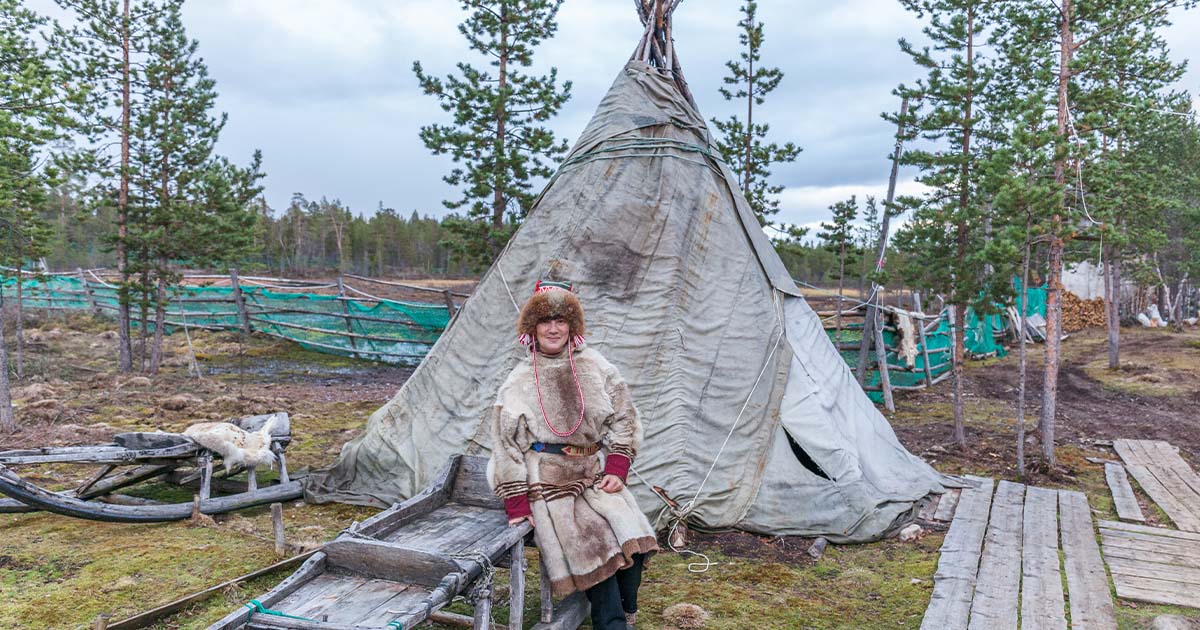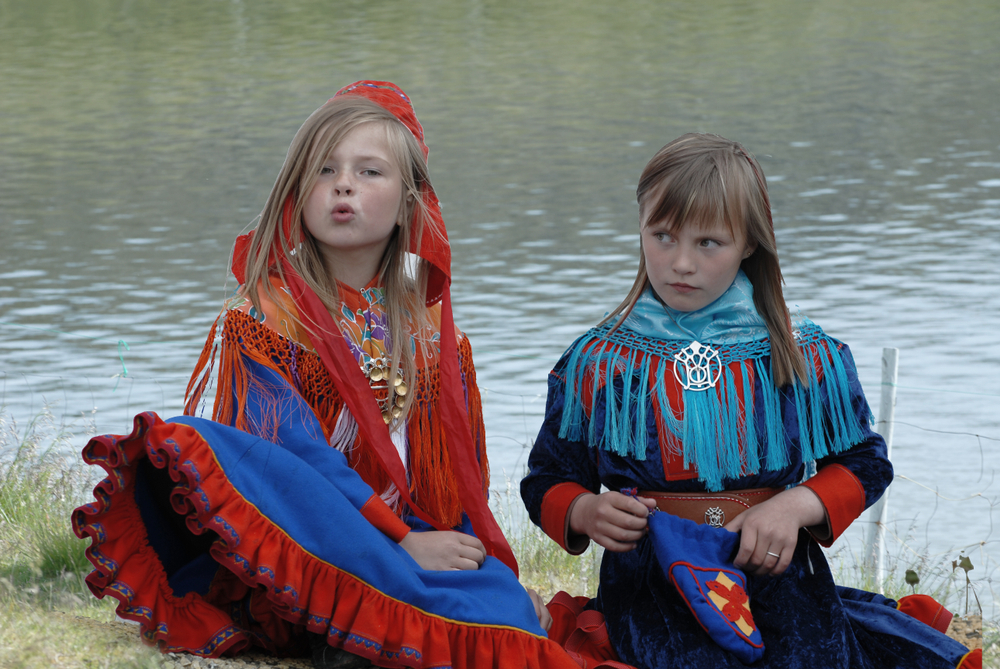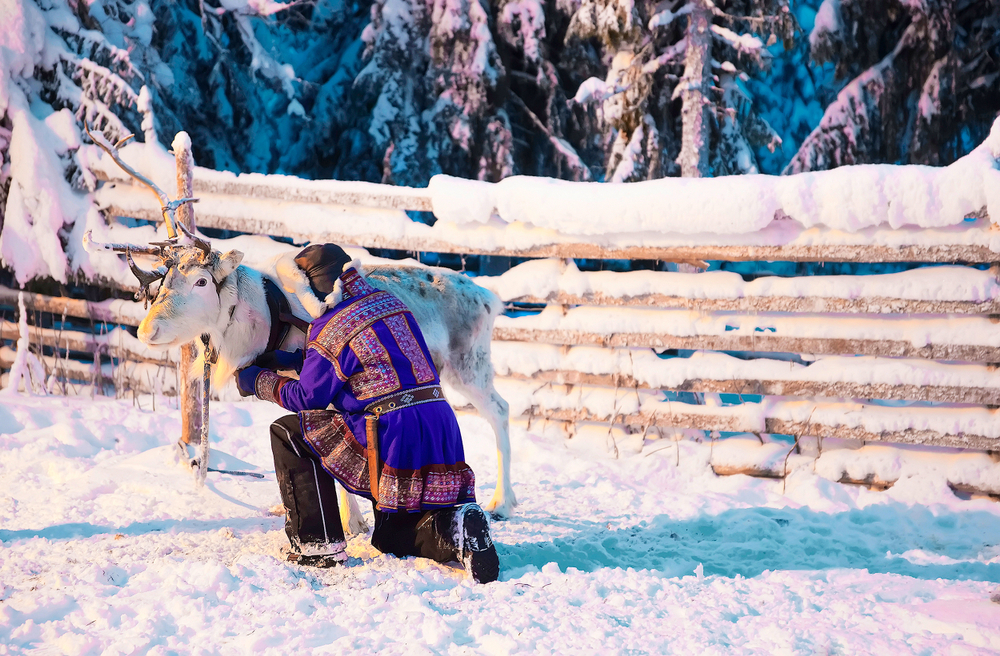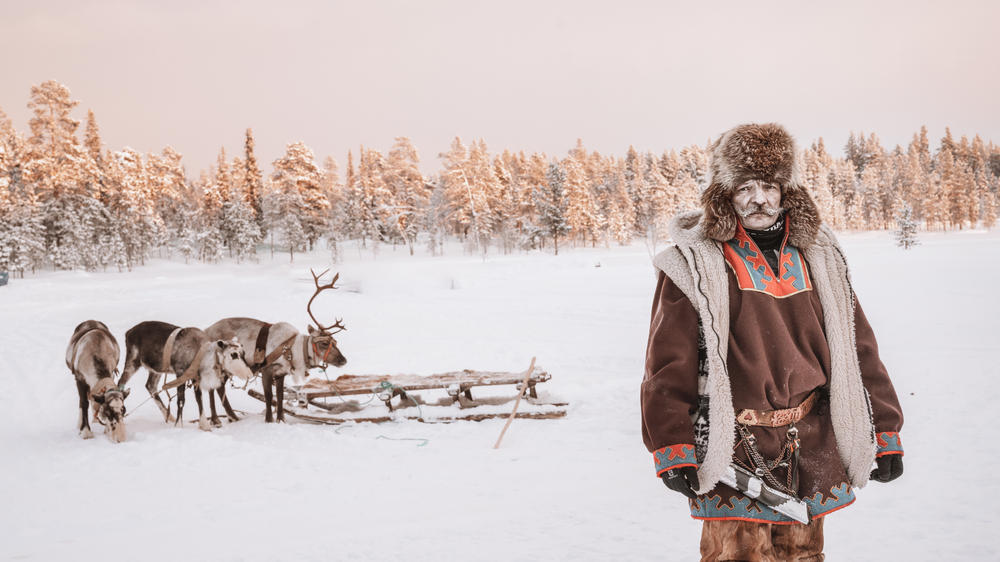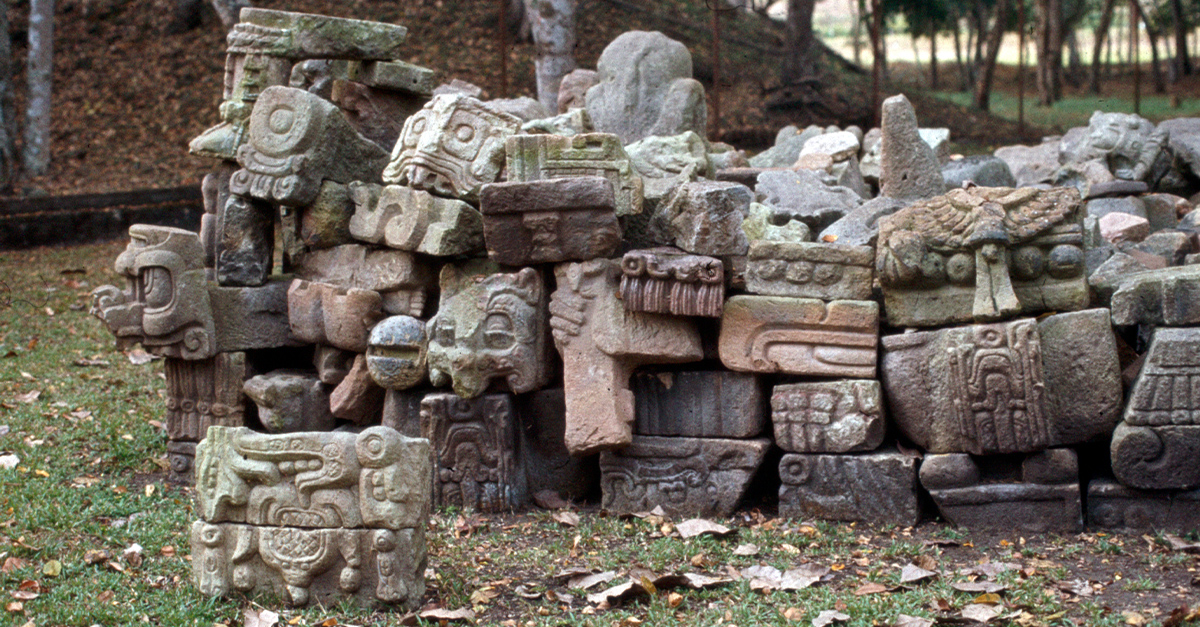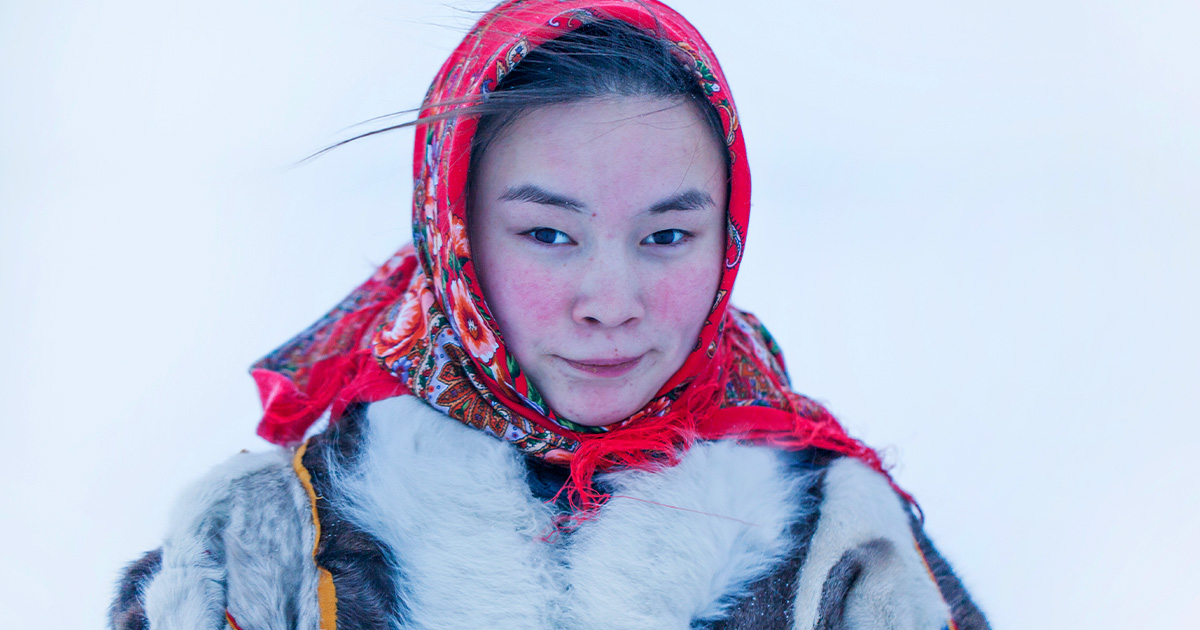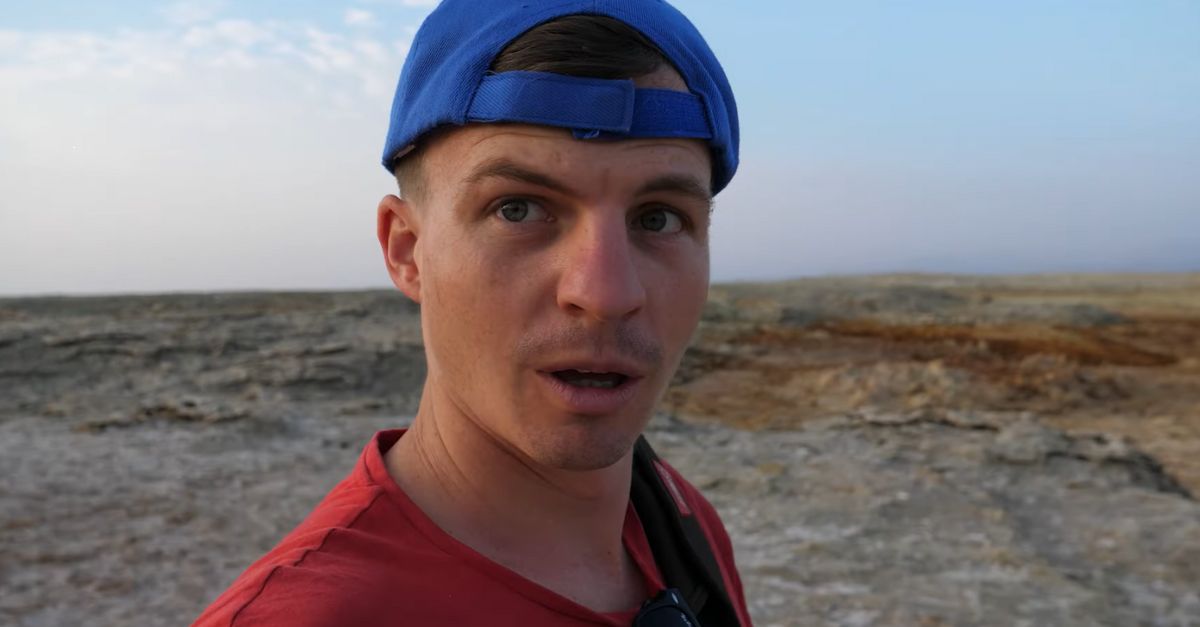Sámi Peoples of Europe
The Sámi people are the only recognized indigenous tribe in Europe.
Not only are they the oldest culture in Norway, they are also currently experiencing a revival, with many members slowly resorting back to their intriguing traditional way of life.
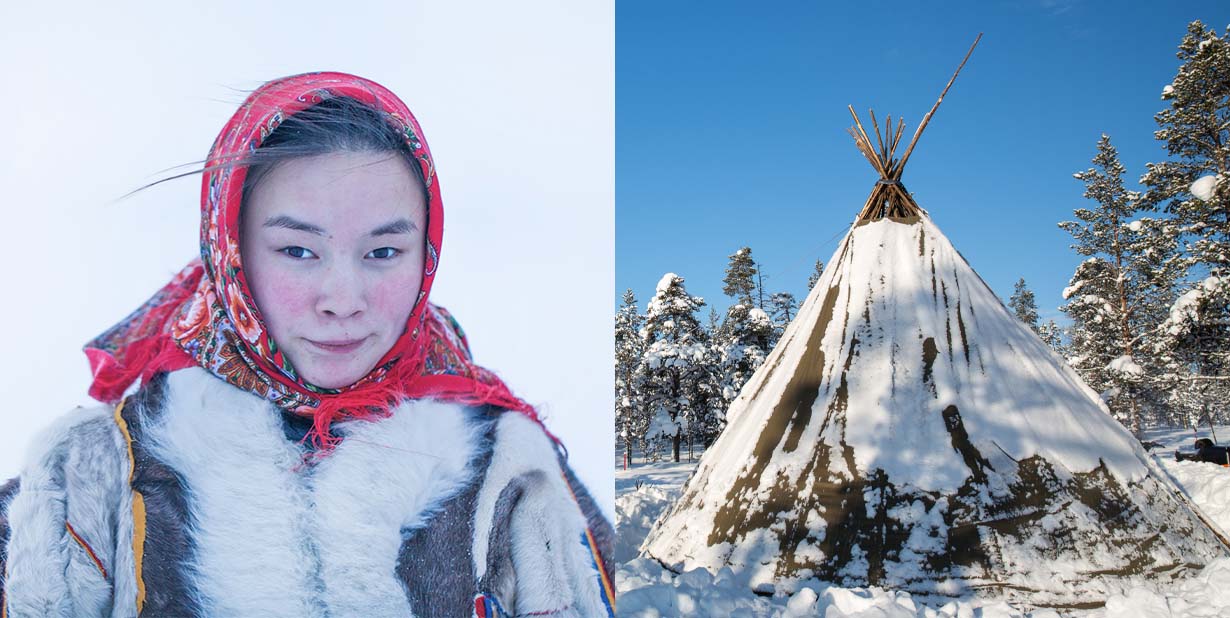
Where do they live?
The Sámi (also spelled Sami or Saami) are the traditionally Sámi-speaking Indigenous peoples inhabiting the region of Sápmi—formerly known as Lapland, which today includes large northern parts of Norway, Sweden, Finland, and of the Kola Peninsula in Russia.
What were they previously known as?
The Sámi have historically been known in English as Lapps or Laplanders, but these terms are regarded as offensive by the Sámi, who prefer the area's name in their own languages, such as: Northern Sámi Sápmi.
 Granbergs Nya Aktiebolag, Wikimedia Commons
Granbergs Nya Aktiebolag, Wikimedia Commons
What language do they speak?
Their traditional languages are the Sámi languages, which are classified as a branch of the Uralic language family.
Currently, nearly all Sámi are now bilingual, and sadly, many no longer speak their native language—but this is beginning to change.
What do they look like?
Sámi people typically have light colored eyes and blond hair. In fact, they are quite indistinguishable from Northern Europeans in terms of physical characteristics.
What do they wear?
Traditional Sámi clothing is called gákti, which was made from reindeer leather and sinews.
Today, the clothing is still commonly worn, however it is now made from wool, cotton, or silk, and is very colorful and vibrant.
Women typically wore a fringed shawl and boots/shoes made of reindeer fur.
How does their clothing represent their status?
The colors, patterns and the jewelry embellishing the gákti give information about the person’s status.
For example, they can tell if someone is married based on the shape of buttons on their belt: square buttons mean they are married.
What is their population size?
The total population of Sámi in Norway, Sweden, Finland and Russia is estimated to approximately 80,000—and about half of them live in Norway.
Most settlements are located in Northern Norway, primarily the county of Finnmark.
Who are they descendants of?
The Sámi are the descendants of nomadic peoples who had inhabited northern Scandinavia for thousands of years.
 Nasjonalbiblioteket , CC BY 2.0, Wikimedia Commons
Nasjonalbiblioteket , CC BY 2.0, Wikimedia Commons
Are they a nomadic group?
The Sámi people have pursued a variety of livelihoods over the years. At one time they were completely nomadic, following their herds of reindeer.
How did they herd reindeer?
Reindeer herding was the basis of the Sámi economy until very recently. At first, they kept the reindeer in small numbers as pack and decoy animals, until full-scale nomadism with large herds began only a few centuries ago.
 Mats Andersson, CC BY 2.0, Wikimedia Commons
Mats Andersson, CC BY 2.0, Wikimedia Commons
How did they migrate?
With a nomadic lifestyle, the Sámi lived in tents or turf huts and migrated with their herds in small groups of five or six families.
 Unknown Author, Wikimedia Commons
Unknown Author, Wikimedia Commons
What was their traditional housing like?
Traditionally, the Sámi people lived in tent-like huts called lavvu—which typically stood about 20 feet tall and could hold 6-8 people. They’re made using wooden poles with reindeer hides as a cover.
They often had a small open fire in the middle.
 The Finnish Museum of Photography, Wikimedia Commons
The Finnish Museum of Photography, Wikimedia Commons
What other housing did they live in?
Going far back in history, both the Sami and Norse population in Norway lived in a goahti (sometimes called a gamme), a simple and ancient type of hut built of logs, peat, bark, and other natural building materials.
The Sami shifted to lavvu, sometime after WWII.
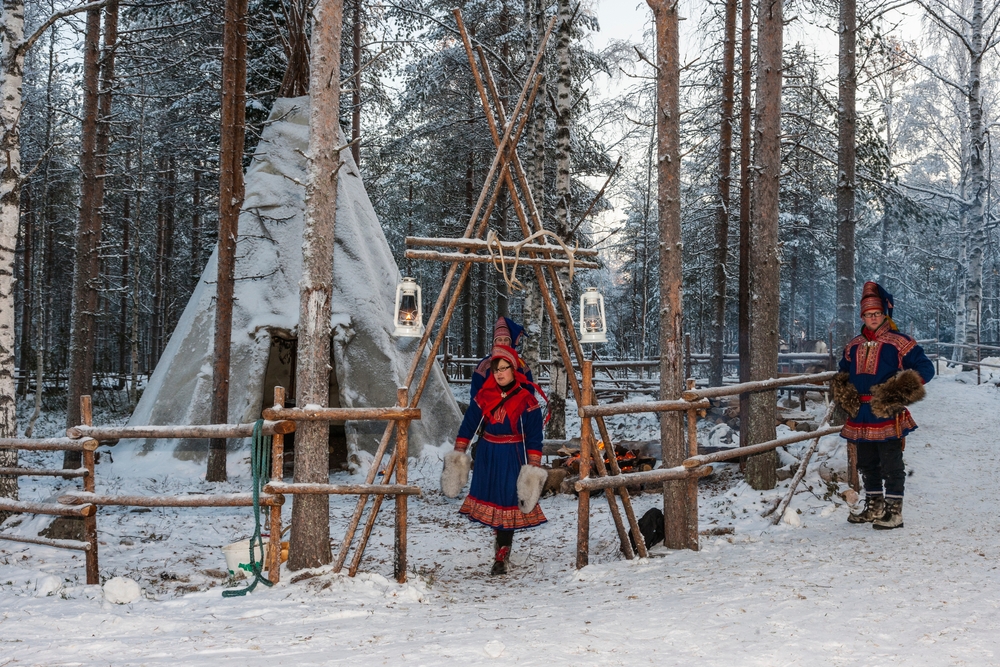 Michele Vacchiano, Shutterstock
Michele Vacchiano, Shutterstock
What did they eat?
Aside from reindeer, the families would supplement their diet along the way by hunting deer and small game, and fishing in nearby fjords and rivers.
Berries and available vegetation were foraged when available.
 Bergen Public Library Norway, Wikimedia Commons
Bergen Public Library Norway, Wikimedia Commons
What did they do for protection?
Due to the harsh environmental conditions of the snowy and icy land they occupy, the Sámi people rarely have to defend themselves against anyone or anything.
Why did they hunt for reindeer?
The reindeer provided the Sámi with meat, fur, and transportation. The fur was used to make clothing, shelter, and various other hand-made products.
 Swedish National Heritage Board, Wikimedia Commons
Swedish National Heritage Board, Wikimedia Commons
Do they still hunt reindeer?
Today, only about 10,000 of the Sámi are still connected to reindeer herding full-time.
Why did they stop?
The Sámi people would follow their reindeer as they migrated across the land. By the Middle Ages, they had to pay taxes to several countries when the reindeer traveled over different borders.
Their solution was to train the reindeer to stay in smaller areas and avoid crossing borders. That, and changing what they do for a living.
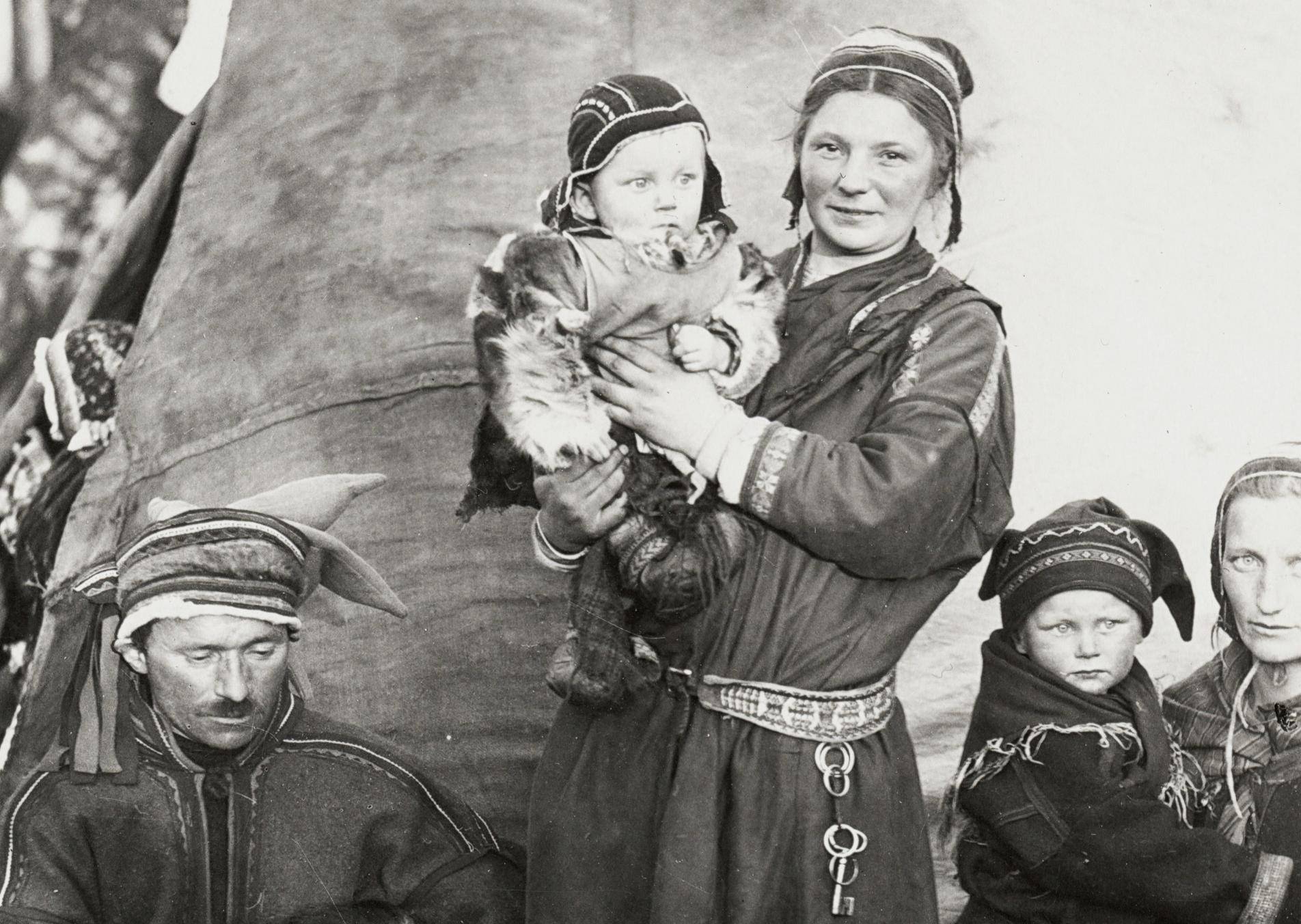 1936 Kortcentralen Helsingfors, Wikimedia Commons
1936 Kortcentralen Helsingfors, Wikimedia Commons
Do they still live in huts?
Of the groups that still herd reindeer, the herders will usually accompany their reindeer alone while their families reside in permanent modern housing.
Some Sámi people who continue to live a traditional lifestyle still live in a lavvu, but the wooden poles are often replaced with aluminum ones now-a-days.
What do they do instead?
Many Norwegian Sámi are now coastal fishermen, and those in other areas depend on farming, forestry, freshwater fishing, and mining.
What challenges do they face?
Over the years, the Sámi people have been faced with illegal mining, overfishing, and losing their land—all of which affect their traditional livelihood and force them into colonization.
 Hélène Edlund, Wikimedia Commons
Hélène Edlund, Wikimedia Commons
Do they still live traditional lifestyles?
Some Sámi people continue to live a traditional life of the longstanding Sámi culture, in settlement areas; however, most Sámi people have integrated into modern society now.
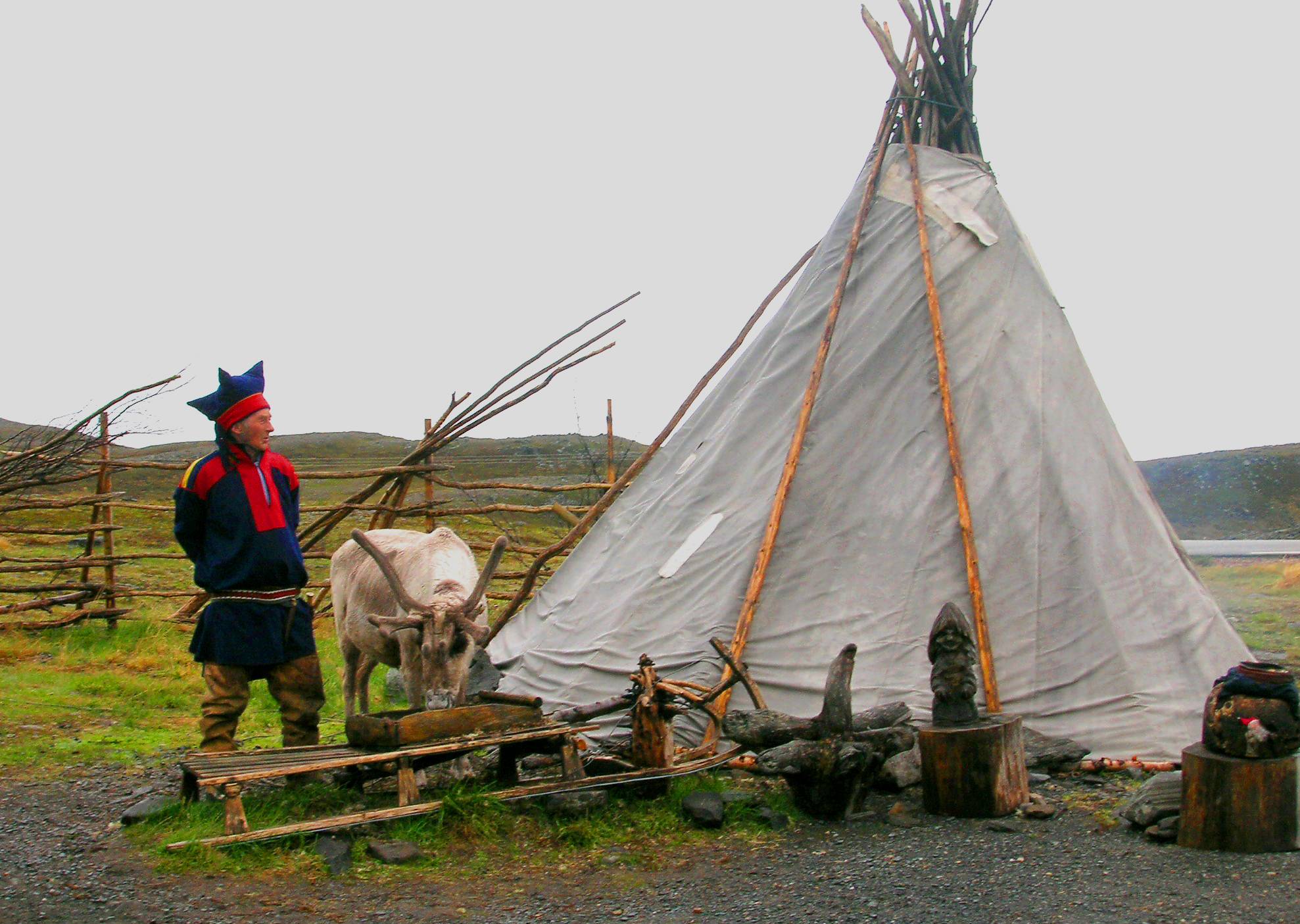 Ernmuhl, CC BY-SA 3.0, Wikimedia Commons
Ernmuhl, CC BY-SA 3.0, Wikimedia Commons
What do modern Sámi people do for work?
There are many Sámi people who work in the modern service sector and then go home to their settlement areas where they practice more culturally specific lifestyles.
Some families have elders who go away for long periods of time for traditional reindeer herding.
What are their cultural traditions?
The Sámi people have a rich cultural heritage that revolves around nature. But music, art and storytelling are also important.
What is ‘joik’?
Joik is the Sámi’s folk music, and is one of the oldest song traditions in Europe. Among the Sámi people, joik is practiced as part of daily life and is dedicated to a person, animal or place.
 Mates, CC BY-SA 3.0, Wikimedia Commons
Mates, CC BY-SA 3.0, Wikimedia Commons
What is the significance of reindeer?
Reindeer have always been a significant part of the Sámi culture, with reindeer meat constituting a major part of the Sámi diet and the fur and skin being used for clothing and shoes.
What is their famous reindeer dish?
The Sámi have a traditional reindeer dish called, bidos—which is a stew with reindeer meat, potatoes and carrots.
How are the Sámi people organized?
During the 70s and 80s, plans to build a dam across the Alta River threatened their way of life and land, and so the Sámi people decided to form a parliament to organize their efforts to protect their culture, and make important decisions.
 Sámediggi Sametinget, CC BY-SA 2.0, Wikimedia Commons
Sámediggi Sametinget, CC BY-SA 2.0, Wikimedia Commons
What is the Sámi Parliament like?
The Sámi parliament is democratically elected by the Sámi people, and is an indigenous parliament that recognizes that the Sámi have lived in Norway for long before national borders were established.
 Sámediggi Sametinget, CC BY-SA 2.0, Wikimedia Commons
Sámediggi Sametinget, CC BY-SA 2.0, Wikimedia Commons
What does it look like?
The Sámi Parliament building is actually shaped like a lavvu—the traditional Sámi tent.
Does the Sámi Parliament protect them?
The Sámi Parliament is located in Karasjok in Northern Norway, and supports the Sámi people in retaining their autonomy and developing their own policies.
They work with other national and internation organizations to represent Sámi interests.
 Sámediggi Sametinget, CC BY-SA 2.0, Wikimedia Commons
Sámediggi Sametinget, CC BY-SA 2.0, Wikimedia Commons
What is a Sámi shaman called?
Noaidis, often referred to as the "Sámi shamans", are the traditional healers and protectors of the Sámi people. Noaidis are considered to have the role of mediator between humans and the spirits.
 O. H. von Lode, Wikimedia Commons
O. H. von Lode, Wikimedia Commons
What are the sacred animals of the Sámi?
The Sámi noaidis believed certain animal spirits acted as their guides in journeys through the different worlds: birds were their guides in the spirit world, fish or snakes went into the underworld for them, and reindeer helped them in spiritual battles.
 Unknown Author, Wikimedia Commons
Unknown Author, Wikimedia Commons
What is the symbol of the Sámi people?
For the Sámi, the drums represented their threatened culture, the resistance against the Christian claim to exclusiveness, and a striving to preserve traditional values – i.e. 'the good' that had to be saved.
 François-Auguste Biard, Wikimedia Commons
François-Auguste Biard, Wikimedia Commons
What are they known for?
The Sámi are known for their intricate designs of fashion and crafts. Their traditional costume-like clothing is all hand-made and designed—even still today, but are mostly only worn for celebrations.
What types of crafts do they make?
Duoddji is the Sámi word for “craft”, and many traditions of craftsmanship such as tin embroidery, pearl embroidery, weaving shoelaces, jacket seams, wood carving, and knife-making are tirelessly maintained.
What is life like for Sámi people today?
Very few Sámi still live a traditional lifestyle today, with most of them living a rather modern way of life.
 morsan, CC BY 2.0, Wikimedia Commons
morsan, CC BY 2.0, Wikimedia Commons
How is their culture reviving?
The younger generations of the Sámi people still hold certain cultural aspects close, and in fact, interest in many of those cultural traditions have been increasing rapidly in recent years—such as, joik, duodji, and the traditional Sámi language.
Can tourists visit the Sami settlements?
Some of the Sámi people partake in tourism as a means of income. Outsiders can pay to visit their settlements to get a better understanding of their lifestyle and take part in their traditions.
How can tourists access the settlements?
Most Sámi settlements are in fairly remote locations in Northern Norway, so there are few transportation methods that can get you there.
It is advised you do adequate research before embarking on your journey, and always show the utmost respect for the Sámi culture.
What is responsible tourism?
There are Sami settlements available for tourists that are specifically run by small-scale companies aiming to provide tourists with an authentic and educational experience of the Sami culture.
Many combine guest activities with reindeer herding, cooking traditional meals, and various traditional activities—all while respecting the environment, community and culture.
Will tourists enjoy the experience?
Absolutely. Although, it is important to remember that the settlements open to tourists are not truly traditional as were made for tourism specifically.

